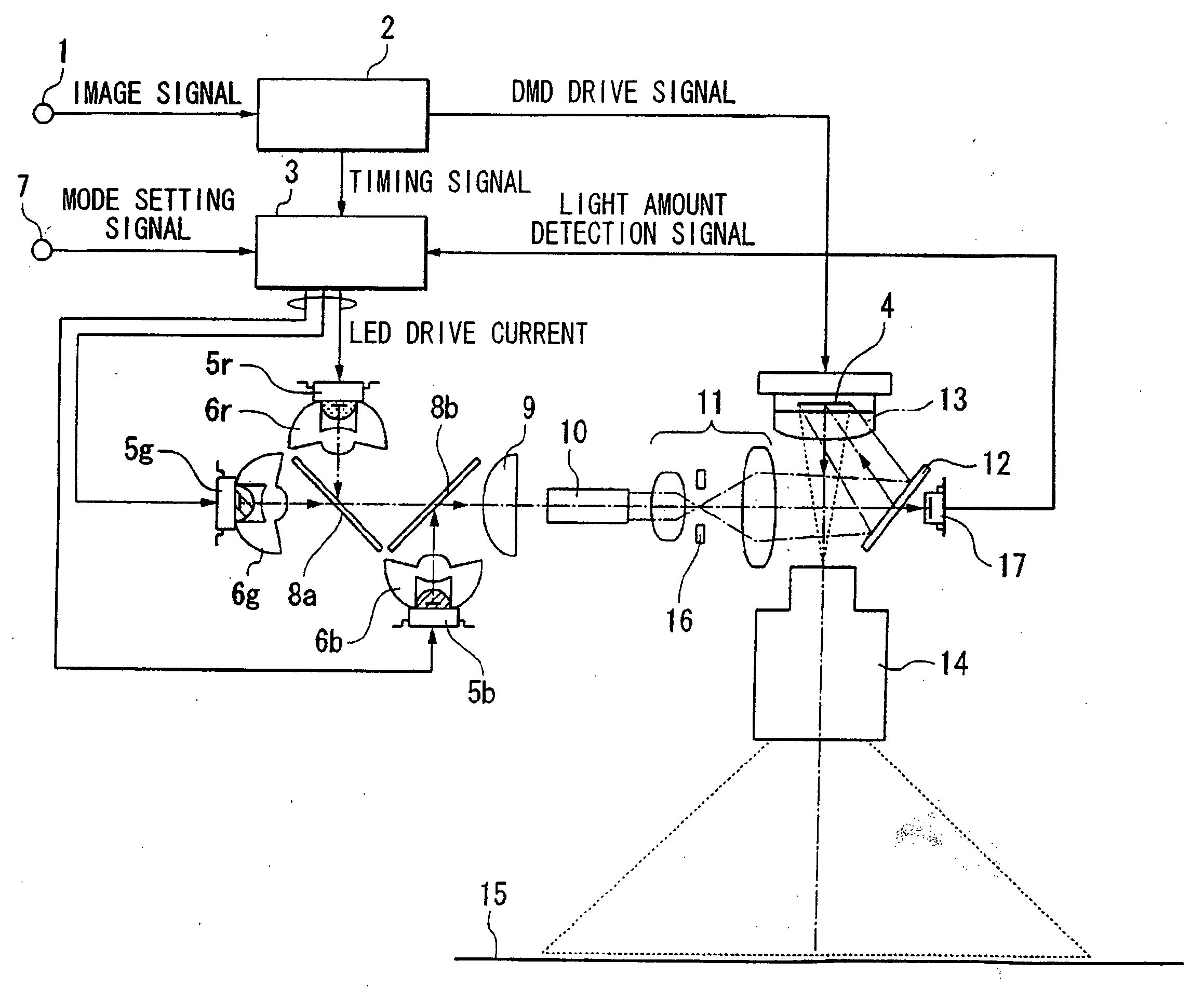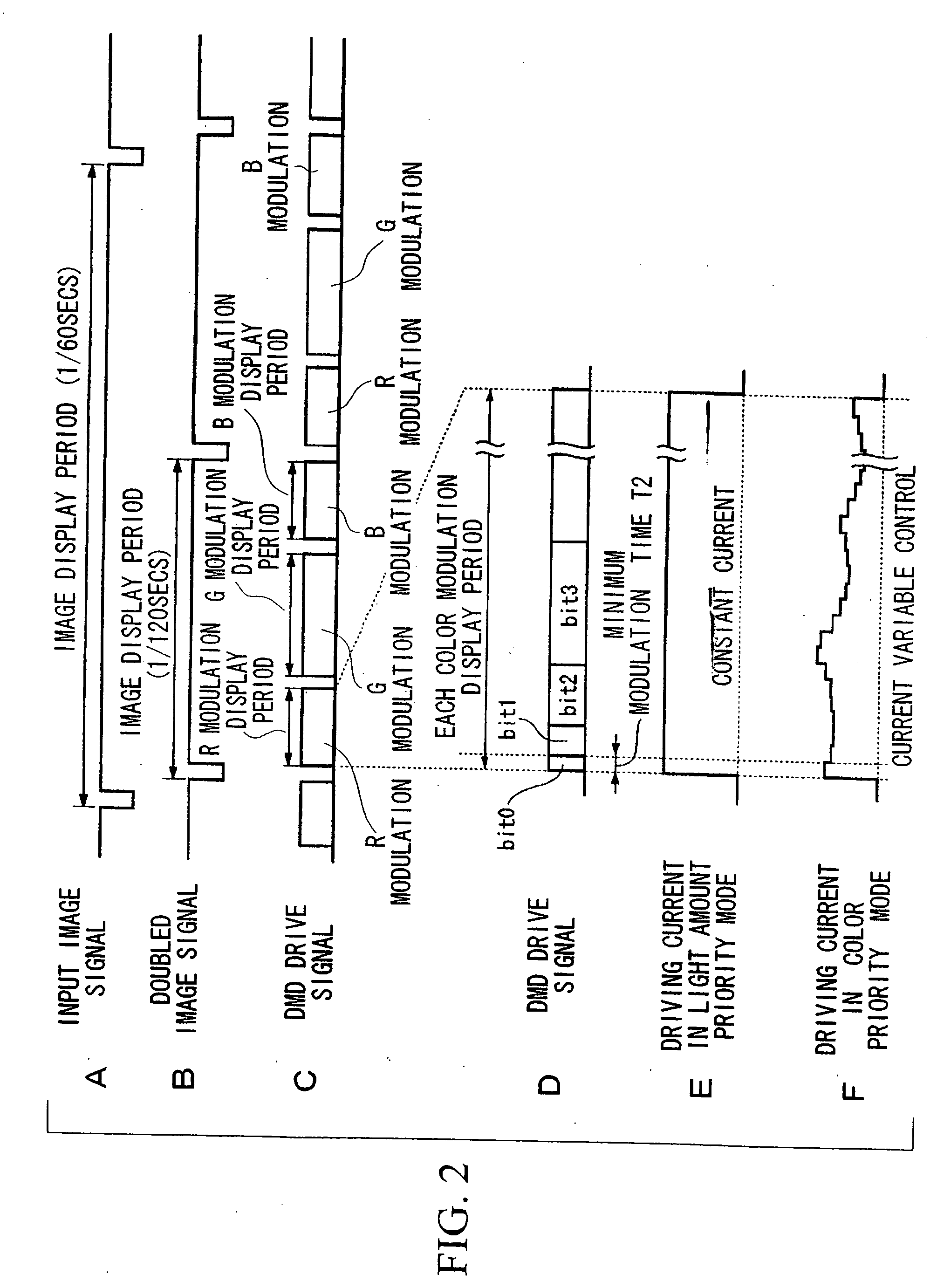Image projection apparatus
a technology of image projection and projection light, which is applied in the field of image projection light apparatus, can solve the problems of inability to display correct gradation, and rapid drop of light emission amount, and achieve the effect of preventing deterioration of color characteristics
- Summary
- Abstract
- Description
- Claims
- Application Information
AI Technical Summary
Benefits of technology
Problems solved by technology
Method used
Image
Examples
first embodiment
[0053]FIG. 1 shows a first embodiment of a projector to which the present invention is applied. In FIG. 1, an image signal is supplied to an input terminal 1. The image signal from the input terminal 1 is supplied to a DMD drive control circuit 2. The DMD drive control circuit 2 converts the input image signal into an RGB field sequential DMD driving signal, and outputs this field sequential DMD driving signal to a DMD element 4.
[0054] That is to say, as shown in A of FIG. 2, one period T0 of the input image signal is, for example, 1 / 60 seconds in the case of NTSC format. This input image signal is doubled as shown in B of FIG. 2 in order to prevent color breakup. One period T1 of a doubled DMD driving signal is, for example, 1 / 120 seconds, and this becomes an image display period. Within the image display period T1 of each DMD driving signal, the R modulation display period, B modulation display period, and G modulation display period are set as shown in C of FIG. 2. As shown in D...
second embodiment
[0098]FIG. 10 shows a second embodiment of a projector to which the present invention is applied. In this example, a plurality of the LEDs are arranged in a circle, and a rotation optical system that switches the LEDs with a rotation rod is used.
[0099] In FIG. 10, an image signal is supplied to an input terminal 101. The image signal from the input terminal 101 is supplied to a DMD drive control circuit 102. The DMD drive control circuit 102 converts the input image signal into an RGB field sequential DMD driving signal, and outputs this RGB field sequential DMD driving signal to a DMD element 104. Moreover, a timing signal that synchronizes with the field sequential driving signal is generated in the DMD drive control circuit 102. This timing signal is supplied to the light source drive control circuit 103.
[0100] The DMD element 104 is a spatial light modulation element that has a large number of minute mirrors disposed on the surface thereof, the angles of the mirrors being chan...
PUM
 Login to View More
Login to View More Abstract
Description
Claims
Application Information
 Login to View More
Login to View More - R&D
- Intellectual Property
- Life Sciences
- Materials
- Tech Scout
- Unparalleled Data Quality
- Higher Quality Content
- 60% Fewer Hallucinations
Browse by: Latest US Patents, China's latest patents, Technical Efficacy Thesaurus, Application Domain, Technology Topic, Popular Technical Reports.
© 2025 PatSnap. All rights reserved.Legal|Privacy policy|Modern Slavery Act Transparency Statement|Sitemap|About US| Contact US: help@patsnap.com



